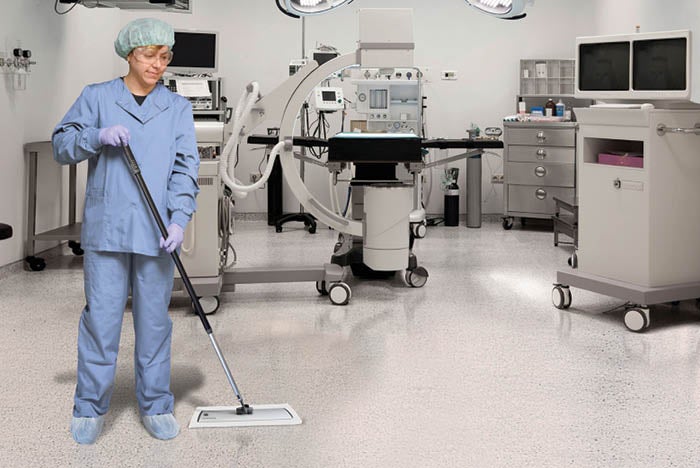Environmental services
Selecting floor substrates for performance and maintenance
A brief look at six types of common health care flooring and their maintenance requirements
|
There are several types of floors in the health care environment. Environmental services (EVS) professionals should work with their flooring manufacturers as well as chemical and equipment suppliers to optimize performance and overall results. Some of the floors that are available include:
- No-wax laminate. This flooring can come in either planks or rolls. A factory coating is usually applied during manufacturing and may wear over time, requiring additional maintenance steps. This type of flooring often has grooves or textures found in the surface design. Dirt can embed in these grooves over time, causing a dirty appearance even though the floor is being cleaned regularly. Interim floor programs can revitalize these floors to look new.
- Sheet vinyl. Sheet vinyl offers benefits like great durability and low maintenance. Additionally, its construction and installation is ideal for infection prevention because it is smooth, easy to clean and disinfect, and the seams can be sealed.
- Vinyl composition tile (VCT). VCT is a low-cost, resilient flooring that is usually 12-by-12 inches in size but is also available in larger sizes. VCT requires more maintenance than some other substrates because it needs to be coated with a water-based acrylic floor finish and then maintained accordingly.
- Carpet. Carpet can be quiet, aesthetically pleasing, soft under foot, and reduce the risk of slips and falls. It also can hide dirt well, at least at first. Daily maintenance requires regular vacuuming and spotting. As the carpet starts to look slightly dirty, it is important to implement interim maintenance methods, such as bonnet buffing or encapsulation, which offer faster dry times and less down time than extraction cleaning. This will keep carpets looking fresh and extend the time between extraction requirements. Some encapsulation methods also produce results very close to extraction and are safe for sensitive fibers, including wool. It also is important to stop dirt at the door with entrance matting.
- Ceramic and porcelain tile. For these floors, maintenance can be as simple as cleaning the floor. It is a durable surface yet may break and chip easily. A challenge with maintenance is keeping the grout clean. If a facility has a newly installed ceramic floor, EVS professionals should consider applying a penetrating sealer to the grout to help maintain the appearance.
- Stone. Stone floors can be smooth or highly textured. These surfaces can be very sensitive to acid. Depending on the stone, maintenance could be as simple as regular cleaning. Traditional floor finishes or sealers also are commonly used on some stone surfaces. If the stone has been highly honed or polished at the time of installation, a diamond pad program is ideal for maintenance.



